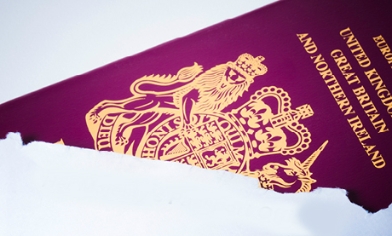What does excess mean in car or van insurance?
If you have car or van insurance, you’ve probably come across the word “excess” in your policy documents. But what exactly does it mean?
Put simply, excess is a pre-agreed amount of money you need to pay if you make a claim. Your car insurance provider will then cover the rest up to your policy limit. For example, if your car repair costs £500 and your excess is £100, you’ll pay £100. Your insurer will pay the remaining £400.
Excess is your contribution to the cost of a claim. This way, you’re not paying for everything, but you’re also not claiming for every minor repair, which can help keep your premiums lower.
Compulsory vs voluntary excess
When you make a car or van insurance claim, you’ll need to pay an excess. There are two types:
- What is compulsory excess? This is the amount you must pay if you make a claim. It’s set by your insurer when you take out the policy, and you can’t change it.
For example, if you’re under 25 and have car insurance, your compulsory excess might be higher than someone older. This is because younger drivers are considered a higher risk. If your compulsory excess is £250 and you make a claim for £1,000, you’ll pay £250. Your insurer will cover the remaining £750.
- What is voluntary excess? This is an optional amount you choose to pay on top of your compulsory excess. Opting for a higher voluntary excess can lower your premium, but it also means paying more if you need to claim.
For example, if your compulsory excess is £250 and you choose a voluntary excess of £100, your total excess is £350. If you make a claim for £1,000, you’ll pay £350. Your insurer will pay £650.
Before choosing a voluntary excess, make sure you can afford the total amount if you need to claim. Always check your policy documents to see your excess amounts.
Do you need both compulsory and voluntary excess?
No, you don’t need to have both.
If you make a claim on your car insurance, you must pay your compulsory excess.
A voluntary excess is optional. If you choose to add one, you’ll need to pay both your compulsory and voluntary excess if you make a claim.
Should you choose a higher voluntary excess?
A higher voluntary excess can reduce your insurance costs. But the most important thing to think about is whether you can afford to pay the total excess if you need to make a claim.
For example, if your compulsory excess is £200 and you choose a £300 voluntary excess, you'd have to pay £500 before your insurer covers the rest.
Lower premiums might be appealing, but they won’t help if you can’t afford the excess when you need it.
Is it worth making a claim on something low value?
If the cost of repairs or replacement is close to or lower than your total excess, it might not be worth making a claim.
For example, if your total excess is £500 and your repair costs £450, you’d pay it all yourself anyway. Claiming wouldn’t save you any money.
Making a small claim could also impact your no-claims discount. Available from one year onwards, this is a discount insurers offer to drivers who don’t make a claim over a certain period. This helps lower their premium. If you make a claim, you could lose some or all of the no claims discount, which could make your insurance more expensive in the future.

Do you have to pay excess if something isn’t your fault?
Yes, in most cases you still have to pay the excess even if the accident wasn’t your fault. You usually pay it upfront when you make a claim. But you might get it back later if the other driver is found to be at fault and their insurer agrees to pay.
There are some other situations where you don’t normally have to pay excess, such as:
- When someone else makes a claim against your insurance, instead of you claiming on your own policy
- If you have third-party only car insurance, it covers damage to other vehicles but not your own. This means you won’t need to pay an excess for other people’s claims, but you’d be responsible for covering the cost of any repairs to your own vehicle
It’s always a good idea to check your policy to see what applies to you.
What’s an excess waiver?
Some insurers offer an excess waiver, which you can choose to add on to your car insurance policy for an extra fee. If you do, you won’t need to pay an excess when making a claim.
How excess works on different types of insurance
While this guide focuses on car and van insurance, excess also applies to other types of insurance as well. Each policy is different, so it’s always a good idea to check the details with your insurer.
Here’s a quick look at how excess usually works in different policies:
Travel insurance
Travel insurance excess typically applies to claims for medical expenses, lost baggage or cancellations. If you’re claiming for more than one person, the excess might apply per person separately rather than per claim. Some insurers also let you waive the excess on your travel insurance for an extra fee.
Pet insurance
Excess for pet insurance can work in two ways: a fixed amount per claim or a percentage of the vet bill. This is known as a ‘co-payment’ and usually applies to older pets.
Home insurance
With home insurance, compulsory and voluntary excess work in a very similar way to car and van insurance. Excess amounts can vary depending on the type of claim. For example, the excess for water damage might be different from the excess for a burglary claim.
Gadget insurance
Gadget insurance usually typically covers items like smartphones, laptops, tablets and smartwatches against accidental damage, loss or theft. Some policies have a set excess you pay towards a claim. In some cases, this amount gets smaller the longer your gadget is covered, until it reaches a lower limit. It stays at that lower amount as long as the gadget is still insured.
Life insurance
Life insurance doesn’t usually have an excess. It pays out a lump sum on death or serious illness, with no deductions.
Need help understanding your insurance?
Insurance documents aren’t always easy to get your head around. If you need help with your policy, whether it’s understanding excess or terms and conditions, take some time to read through it carefully. If anything isn’t clear or you have any questions, contact your insurer for more help.
Key takeaways
- Excess is the amount you pay when making an insurance claim before your insurer covers the rest. Compulsory excess is set by your insurer and applies to every claim. Voluntary excess is an additional amount you agree to pay if you need to make a claim
- A higher voluntary excess can lower your premium, but you’ll need to pay more if you make a claim. Always make sure you can afford the total excess before you choose this option
- Excess amounts can vary depending on the type of insurance and the claim. Check your policy documents or speak to your insurer to understand what applies to you













